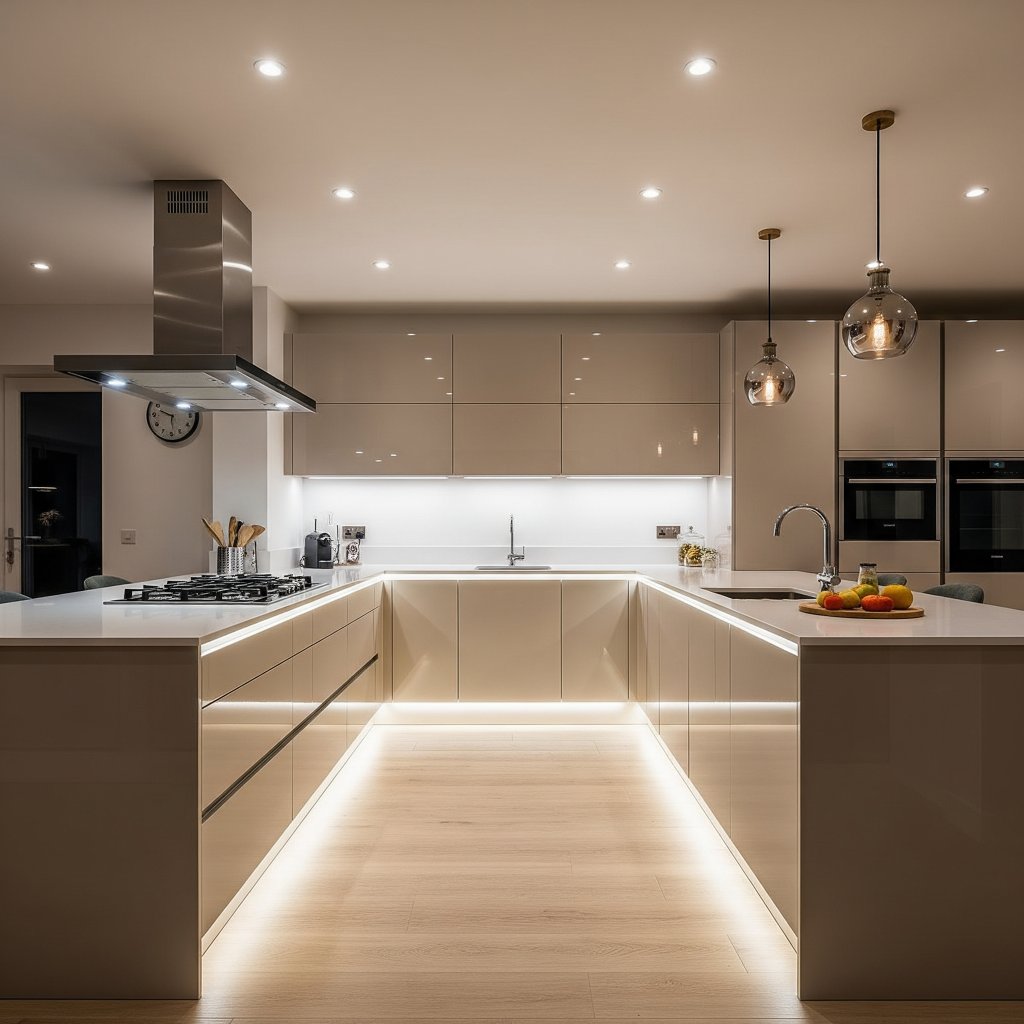
In the lexicon of contemporary interior design, the kitchen has transcended its purely utilitarian role to become the undeniable heart of the home. No longer just a place for culinary pursuits, it's a hub for entertaining, a workspace, and a sanctuary. As this evolution continues, designers are turning their attention to the nuanced power of lighting – specifically, how subtle illumination can utterly transform the aesthetic and atmosphere of this vital space.
Forget the days of a single, glaring overhead fixture. The prevailing wisdom now champions a multi-layered approach, where light is less about stark brightness and more about sculpting space, highlighting textures, and fostering a profound sense of comfort. This isn't about grand statements from imposing chandeliers, but rather the quiet confidence of well-placed, unobtrusive light sources working in harmony.
Consider the interplay of task and ambient lighting. While focused illumination under cabinets remains essential for practical food preparation, the true magic lies in its integration. Modern LED strips, often barely visible, cast a gentle glow across work surfaces, eliminating shadows and creating an inviting warmth. This contrasts beautifully with softened ambient light from recessed downlights, which provide overall illumination without overpowering the room, allowing other elements to breathe.
Accent lighting, often overlooked, is where the subtle art truly comes alive. Imagine the delicate wash of light emanating from within glass-fronted cabinets, showcasing treasured glassware or ceramics. Or the understated elegance of toe-kick lighting, which creates a floating effect for islands and base units, lending an ethereal quality to the space, particularly in the evening. These seemingly minor additions contribute significantly to the kitchen's depth and visual interest, drawing the eye to architectural features or carefully curated displays.
The choice of colour temperature also plays a pivotal role. Moving away from harsh, cool white light, the trend favours warmer hues, typically in the 2700K to 3000K range. This softer, more inviting glow mimics natural daylight and incandescent bulbs, fostering a sense of calm and relaxation – perfect for a space where families gather and memories are made. Dimmable switches are, therefore, indispensable, offering the flexibility to transition from bright, functional illumination during the day to a more intimate, atmospheric setting for evening entertaining.
Ultimately, subtle lighting in the kitchen is an exercise in restraint and precision. It's about crafting an environment where light doesn't shout for attention but whispers, enhancing the natural materials, textures, and lines of the design. It transforms a functional room into a captivating experience, demonstrating that sometimes, the most powerful design elements are those that are felt rather than overtly seen.
For Further Reading:
Homes & Gardens: 10 kitchen lighting trends interior designers are loving in 2025 - Explore current trends and expert insights on evolving kitchen lighting. /news/kitchen-lighting-trends
More Kitchens: An essential guide on kitchen lighting - Delve deeper into the different types of kitchen lighting and their strategic application. /kitchen-inspiration/2020/12/guide-to-kitchen-lighting